Dealing with an unauthorized person on your property can be stressful and confusing—but understanding your rights under Texas law can make all the difference. Before you can take action, you have to get one thing straight: are you dealing with a squatter or a trespasser? This isn't just a matter of wording—it's a critical legal distinction that determines your next steps.
Choosing the wrong path can waste months of your time and a significant amount of money. Trespassing is a criminal issue handled by law enforcement, while squatting is a civil matter that must be resolved through the formal eviction process in court. Protecting your property rights starts with knowing the difference.
Understanding Squatters vs. Trespassers In Texas
Walking onto your property to find someone living there without your permission is a difficult situation for any landlord. Your first instinct might be to call the police, but that isn't always the correct move. The success of your actions hinges entirely on whether Texas law views the person as a trespasser or a squatter.
A trespasser is someone who enters a property without any permission. Imagine someone breaking a window to get into a vacant house. This is a clear criminal act. In these straightforward cases, you should call the police immediately. They have the authority to remove the person for criminal trespassing.
A squatter, however, presents a much trickier situation. This is an individual occupying your property without a legal right, but they often have a plausible-sounding, though invalid, claim of right that transforms the issue into a civil dispute.
Here's a simple guide to help you tell the difference:
Squatter vs. Trespasser: Key Differences in Texas
| Legal Distinction | Squatter | Trespasser |
|---|---|---|
| Nature of Issue | Civil Matter | Criminal Offense |
| Initial Action | Serve a Notice to Vacate | Call Law Enforcement |
| Legal Process | Formal Eviction Lawsuit | Arrest and Removal by Police |
| Claim to Property | May have a (weak) claim of right | No claim of right |
| Example | A tenant who refuses to leave after their lease ends. | Someone breaking into a vacant building. |
Understanding these distinctions is crucial because if the police arrive and determine it’s a civil issue, they will not intervene. They will instruct you to handle it in court, which is where the formal eviction process begins. A Texas landlord tenant lawyer can help you navigate this complex first step.
Common Scenarios That Create Squatters
So, how does someone become a squatter instead of a trespasser? It usually starts with a situation that wasn’t initially illegal, but the lines get blurred over time.
Here are a few real-world scenarios that illustrate how squatters' rights issues can arise:
- Holdover Tenants: This is the most common situation. You had a tenant with a valid lease, but it expired a month ago. They have stopped paying rent and refuse to move out. They were not a trespasser when they moved in, but now they are a squatter.
- Unauthorized Subletters: Your tenant rents a room to a friend without your approval, violating the lease. When your original tenant moves out, their friend stays behind. That person has no legal agreement with you and is now considered a squatter.
- Inherited Property Occupants: You inherit a home from a relative. When you visit the property, you discover another family member living there, claiming the deceased owner said they could stay "as long as they needed."
In each of these examples, the police will almost certainly classify the situation as a civil matter. They see a prior relationship or a claim of an agreement (even a verbal one), leaving you with only one legal option: the formal eviction process. For more information, it is helpful to understand the Texas Property Code and tenant rights.
What About Adverse Possession in Texas?
You have likely heard the term "squatter's rights," which is a simplified way of talking about a legal concept called adverse possession. This doctrine allows someone to gain legal ownership of a property by occupying it for a very long period under a strict set of conditions.
In Texas, the standard for an adverse possession claim is incredibly high. It requires years—often 10 years or more—of continuous, open, and hostile occupation. For a landlord dealing with a recent holdover tenant or unauthorized occupant, this is not an immediate concern.
However, the existence of this law is precisely why you cannot afford to delay. By starting the formal eviction process immediately, you legally interrupt any claim of continuous possession the squatter might try to make in the future. Acting quickly and following the proper legal steps is the best way to protect your property rights.
How to Legally Begin the Eviction Process
Once you've determined you are dealing with a squatter, the path forward is a civil one. It's frustrating, and your first instinct might be to take matters into your own hands. But that is the worst thing you can do.
Changing the locks, shutting off the utilities, or moving their belongings to the curb may feel justified, but these are considered illegal "self-help" evictions in Texas. These actions can backfire dramatically and land you in court, facing a lawsuit from the squatter. The only lawful way to reclaim your property is by following the formal eviction process, which starts with one critical legal document.
The Essential First Step: The Notice to Vacate
Before you can file an eviction lawsuit, Texas law requires you to give the squatter a formal, written warning. This is called a Notice to Vacate. This isn't just a polite letter; it is a legal prerequisite that officially begins the eviction process.
Under Texas Property Code § 24.005, this notice must be precise. If you make a mistake in the details or fail to deliver it correctly, a judge can dismiss your entire case, forcing you to start over. This simple but critical step is where consulting an experienced eviction attorney can save you from costly errors.
Your Notice to Vacate must:
- Be in writing.
- Clearly demand that the occupant leave the property.
- Provide a specific deadline to move out (at least three days, unless a prior written agreement states otherwise).
- Include the property's full address.
- State the reason for the eviction (e.g., "occupying the property without a lease or consent from the owner").
This infographic helps clarify how to determine your next move based on who is on your property.

As the chart shows, once you identify an unauthorized person, the key is distinguishing between a trespasser (a police matter) and a squatter. For a squatter, you must begin the civil eviction process outlined here.
How to Properly Deliver the Notice in Texas
How you deliver the notice is just as important as what it says. You can't just send a text message or leave a voicemail. The Texas Property Code is very specific about the approved methods for "serving" the Notice to Vacate.
Proper delivery methods include:
- Personal Delivery: Handing the notice directly to the squatter or to anyone at the property who is 16 years of age or older.
- Posting and Mailing: Attaching the notice to the inside of the main entry door. If you cannot get inside, you may post it on the outside, but you must also mail a copy on the same day.
- Certified Mail: Sending the notice via certified mail with a return receipt requested.
Crucial Tip: Document everything meticulously. Take a timestamped photo of the notice on the door. If you deliver it in person, write down the date, time, and name or description of the individual who accepted it. This documentation is your evidence, and it will be essential in court.
A Real-World Scenario
Let's say your previous tenant moved out of a rental house you own. A week later, you visit and find someone else living there who claims the old tenant "said it was okay" for them to stay. You have no agreement with this person, they are not paying rent, and they are not a guest of a legitimate tenant. You have a squatter.
Your first step is to draft a clear Notice to Vacate. You list their name (or "All Occupants" if you don't know it), the property address, and give them three full days to leave. You then drive to the property, securely tape the notice to the inside of the front door, and take a photo. On your way home, you stop at the post office and mail another copy. By taking these steps, you have built the legal foundation for your eviction case. If they are still there after the deadline, you are now legally cleared to file an eviction lawsuit. To understand what comes next, you can review our complete guide on the eviction process in Texas.
Filing an Eviction Lawsuit (Forcible Detainer)
The deadline on your Notice to Vacate has passed, and the squatter is still on your property. This is the point where you must transition from sending notices to taking legal action. Your next step is to file what Texas law calls a Forcible Detainer lawsuit.
This is the official name for an eviction suit, and it is your only legal path to reclaim your property. You will file this lawsuit in the Justice of the Peace (JP) court for the precinct where your property is located. While going to court can feel intimidating, understanding the steps will help you handle the process correctly.
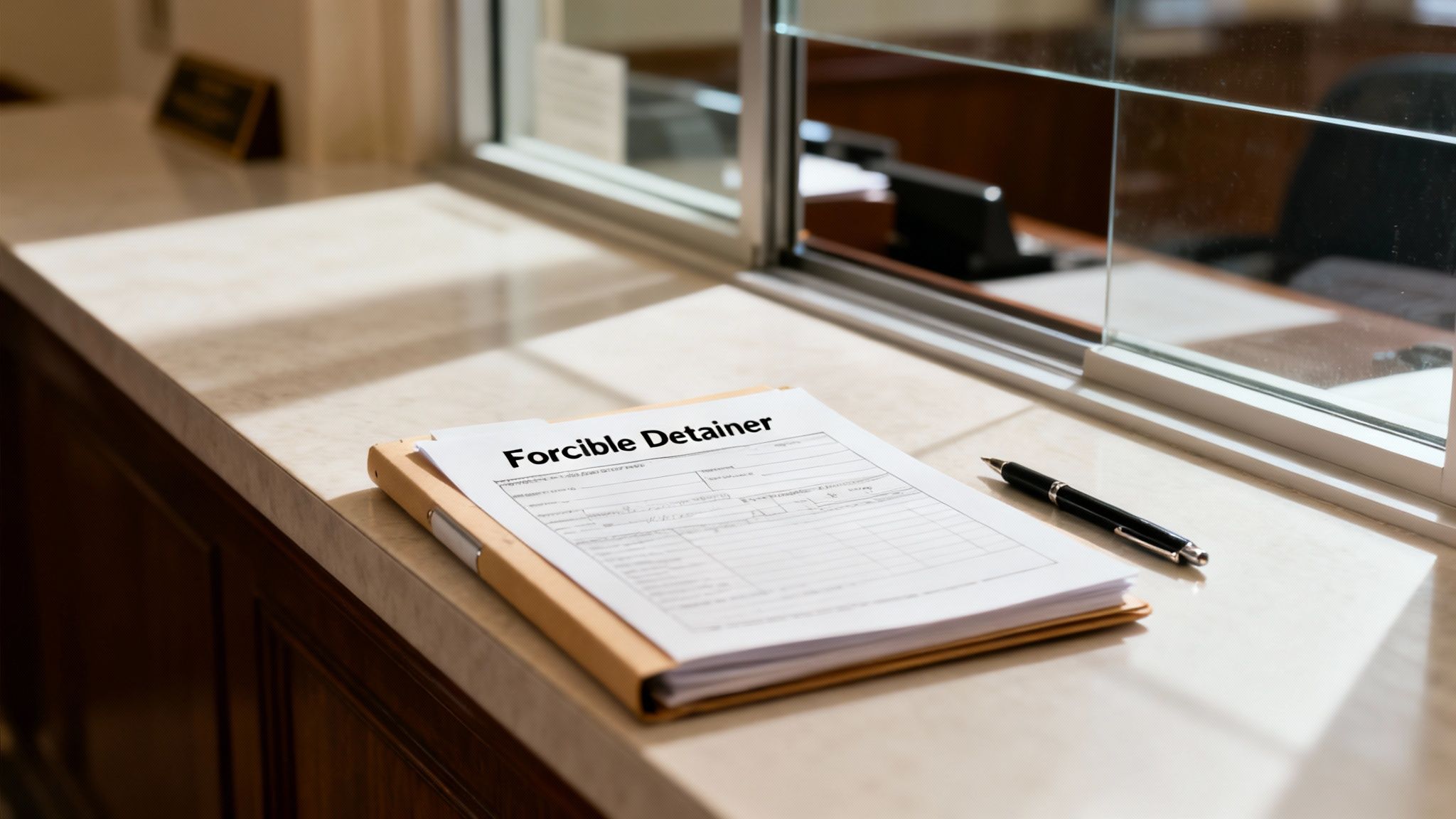
What the Texas Property Code Says About Forcible Detainer
A Forcible Detainer is a straightforward legal tool with a very specific purpose: to determine who has the immediate right to possess a property. This type of lawsuit isn't about property titles or mortgage disputes. It is designed to answer one simple question: do you, the property owner, have a greater right to occupy the property than the person currently living there?
When dealing with a squatter, the answer is almost always "yes." They have no lease, no rental agreement, and no permission to be on the premises. This makes the forcible detainer process a relatively quick and direct way to get a judge to order their removal.
Step-by-Step Guide to Filing Your Lawsuit
To begin, you will need to fill out a "Petition for Eviction." You can typically get this form from the JP court clerk or download it from their website. Pay close attention to the details, as accuracy is critical.
You’ll need to provide:
- Your Information: Your full name and contact details as the property owner (the "Plaintiff").
- Occupant's Information: The squatter's full name (the "Defendant"). If you don’t know their name, you can list them as "Unknown Occupant" or "All Occupants."
- Property Description: The full and correct address of the property.
- Reason for Eviction: A simple statement explaining that the occupant is on your property without your consent and refused to leave after receiving a proper Notice to Vacate.
You will also have to pay a filing fee to get your case on the court's calendar. The cost varies by county, but it is a necessary step. Keep the receipt, as you may be able to recover this cost later.
Why "Proper Service" is a Non-Negotiable Step
Once the lawsuit is filed, you cannot just text the squatter or tack a note to the door. The court requires a formal delivery of the lawsuit, a process known as "service of process." This is a critical step that gives the court legal authority over the defendant.
In Texas, the eviction lawsuit papers (the "citation") must be officially served to the squatter by a sheriff or a constable. This ensures there is legal proof that the occupant was notified of the court date and has an opportunity to respond. You cannot serve the papers yourself—doing so will get your case dismissed.
This formal process prevents a squatter from later claiming they were unaware of the lawsuit. The officer will file a "Return of Service" with the court, which proves that legal notification was completed.
Squatting is not just a Texas problem; it is a symptom of larger housing issues seen worldwide. In places like Brazil, squatter settlements are sometimes organized movements by people seeking housing in cities that cannot provide it. They occupy land and begin long negotiations with the government for basic rights. You can discover more insights about these complex urban housing struggles.
After the squatter has been served, the court will schedule a hearing. This is your day to present your case to the judge and ask for a ruling that gives you back your property. An eviction attorney can ensure you are fully prepared for this vital hearing.
Preparing for Your Eviction Hearing in Texas
Your day in court is your opportunity to formally ask a judge to restore your property rights. Filing the lawsuit got your foot in the door, but now you must present a clear and convincing case to win. Being prepared is everything—it gives you the confidence to stand before the judge and provides the best possible chance of getting a favorable judgment.
The Justice of the Peace (JP) court is less formal than higher courts, but it still operates on rules and evidence. Your goal is simple: prove you own the property and the person living there has no legal right to be there.
Gathering Your Essential Evidence
You can't just walk in and say, "That's my house." You have to prove it. While your testimony is important, your documentation will do the heavy lifting. Before you head to the courthouse, gather every document that supports your claim.
Here is a step-by-step checklist of what to bring:
- Proof of Ownership: Your property deed is the best evidence to establish your rights.
- Copy of the Notice to Vacate: Bring the exact notice you served.
- Proof of Delivery: This is where your diligent preparation pays off. The photo of the notice on the door or your certified mail receipt is crucial evidence. It shows you followed the Texas Property Code precisely.
- All Communications: Print copies of any emails, text messages, or other written correspondence with the squatter.
- Photographs or Videos: Visual evidence is powerful. Any photos or videos showing the unauthorized occupancy or any damage they've caused can be very persuasive.
Organize these documents so you can present them clearly. It shows the judge you are serious and respectful of the court's time.
How to Present Your Case and Handle Defenses
When it is your turn to speak, remain calm and stick to the facts. Address the judge as "Your Honor," state your name, identify the property, and explain that the defendant is occupying it without your consent. Then, walk the judge through your evidence, piece by piece, explaining what each document is and why it's important.
Be prepared for the squatter to offer a defense. Their claims are often weak, but they can complicate the hearing if you aren't ready to respond. A common tactic is to claim a verbal agreement, stating that you or a previous owner gave them permission to live there. This is where your documentation becomes your shield. If you have no record of such an agreement, and they have no proof (like rent receipts), your deed and your formal Notice to Vacate will almost always prevail.
The core of your argument is simple: You are the legal owner. The occupant has no lease. You followed the law to ask them to leave. Everything else is secondary.
What Happens After the Judge's Ruling
If you have made your case successfully, the judge will grant you a Judgment for Possession. This is the court's official order stating the property is rightfully yours. It is a major victory, but you can't change the locks just yet. Under Texas law, the squatter has five days from the date of the judgment to appeal the decision. They are legally allowed to remain on the property during this five-day period.
If they file an appeal, the case moves to a higher court, and the process will take longer. However, if five days pass with no appeal and the squatter still hasn't left, you are cleared for the final step. You now have the legal green light to reclaim your property for good.
Using a Writ of Possession to Reclaim Your Property
You won your lawsuit. The judge granted you a Judgment for Possession, making it official: the property is rightfully yours. It's a huge victory, but it isn't the end of the road. That court order doesn't magically make the squatter disappear. If they refuse to leave after the five-day appeal window closes, you need to take one final, powerful step to get your property back.
This is where the Writ of Possession comes in. It is a direct order from the court to law enforcement to physically remove the unlawful occupant and their belongings, putting you back in control.

What the Texas Property Code Says About the Writ
Once the five-day appeal period has passed and the squatter remains, you can go back to the same Justice of the Peace court that heard your case. You'll ask the clerk to issue the Writ of Possession. This typically involves filling out a form and paying a small court fee.
From there, you deliver the writ to the local constable or sheriff’s office for that precinct. This is the moment the judge's ruling gets its enforcement power. The constable’s office will then schedule a time to "execute" the writ.
What to Expect: First, the constable will post a notice on the property, giving the squatter a final 24-hour warning to vacate. This is their last chance to leave voluntarily. If they don't, the constable will return to oversee their physical removal.
Step-by-Step Guide to the Day of Removal
When the scheduled day arrives, a constable or deputy will show up at your property to enforce the order. It's critical that you or a representative are there to take back possession. The officer is there to keep the peace and ensure the squatter leaves.
Here’s a breakdown of what happens:
- An Officer on Site: The constable supervises the removal to prevent any trouble.
- The Squatter Is Removed: The occupant is ordered to leave the property immediately.
- Personal Belongings: The officer will stand by while the squatter's items are moved out of the home.
While this feels like a very local legal battle, it is a small piece of a much larger global puzzle. The United Nations reports that almost 1.1 billion people live in slums or informal settlements worldwide—a number that’s jumped by 165 million in just 20 years. This massive scale of housing insecurity shapes eviction laws everywhere. You can learn more about these global housing challenges to see the bigger picture.
How to Handle Property Left Behind
It is common for a squatter to leave personal belongings behind. You must handle this property correctly to avoid creating new legal problems for yourself. Under Texas law, you are not obligated to store their property. Once the Writ of Possession is executed, you have the legal right to move their belongings. The standard practice is to move everything to the curb or another nearby spot where the former occupant can retrieve it.
The constable will typically remain for a short time to ensure this is done without conflict. From the first Notice to Vacate to the final moment the constable hands you back your keys, you have followed the law precisely to reclaim what is yours. An experienced eviction attorney can be a lifesaver during this final stage, ensuring everything is handled smoothly and by the book.
Common Questions About Evicting Squatters in Texas
Dealing with a squatter is stressful, and it’s natural to have questions. The legal process in Texas can be tricky, and a simple mistake can derail your efforts to get your property back. You need clear answers, not dense legal jargon. Here are the answers to the questions our landlord tenant lawyers hear most often.
Can I Turn Off Utilities or Change the Locks to Get a Squatter Out?
While it may be tempting, the answer is an absolute no. In Texas, this is known as a "self-help" eviction, and it is illegal. It does not matter that the person has no right to be there. If you cut the power, change the locks, or remove the front door, you are breaking the law.
You could actually be sued by the squatter. It sounds backward, but under the Texas Property Code, a judge could order you to pay their damages, penalties, and even their attorney's fees. The only legal way to remove someone is with a court-ordered eviction and a Writ of Possession. Attempting a self-help eviction can lead to a wrongful eviction claim, which will only complicate your situation and cost you more in the long run.
How Long Does the Squatter Eviction Process Take in Texas?
Every case is different, but a realistic timeframe is anywhere from three to six weeks, assuming there are no delays. The process can take longer depending on the court's schedule, how quickly the constable serves the papers, or if the squatter files an appeal.
Here is a step-by-step breakdown of the timeline:
- Notice to Vacate: A mandatory three-day waiting period.
- Filing & Service: It can take a few days to a week for a constable to officially serve the squatter.
- Court Date: The hearing is typically scheduled within 10 to 21 days after service.
- Appeal Window: After a judgment, the squatter has five days to appeal.
- Writ of Possession: If there is no appeal, the constable will post a final 24-hour notice before removal.
Patience and following the legal process are your best tools. Trying to rush or cut corners almost always backfires, causing delays and more legal headaches.
Should I Worry About "Adverse Possession" or Squatter's Rights?
You have probably heard the term "squatter's rights," which refers to a legal concept called adverse possession. This is where someone could theoretically gain legal ownership of a property by openly and continuously occupying it for a long time.
Here's the good news: for most property owners dealing with a new squatter, this is not an immediate worry. The requirements for an adverse possession claim in Texas are extremely difficult to meet, typically requiring 10 years or more of uninterrupted occupation. By simply starting the formal eviction process, you legally break that "continuous" occupation and stop any potential claim in its tracks.
Think of the threat of adverse possession as a motivator. Taking swift, correct legal action is the best way to protect your property rights for the long term.
If you need help with an eviction, lease issue, or rental dispute, contact The Law Office of Bryan Fagan, PLLC for a free consultation today. Our dedicated team is here to protect your rights as a Texas property owner. https://texastenantlawyers.com

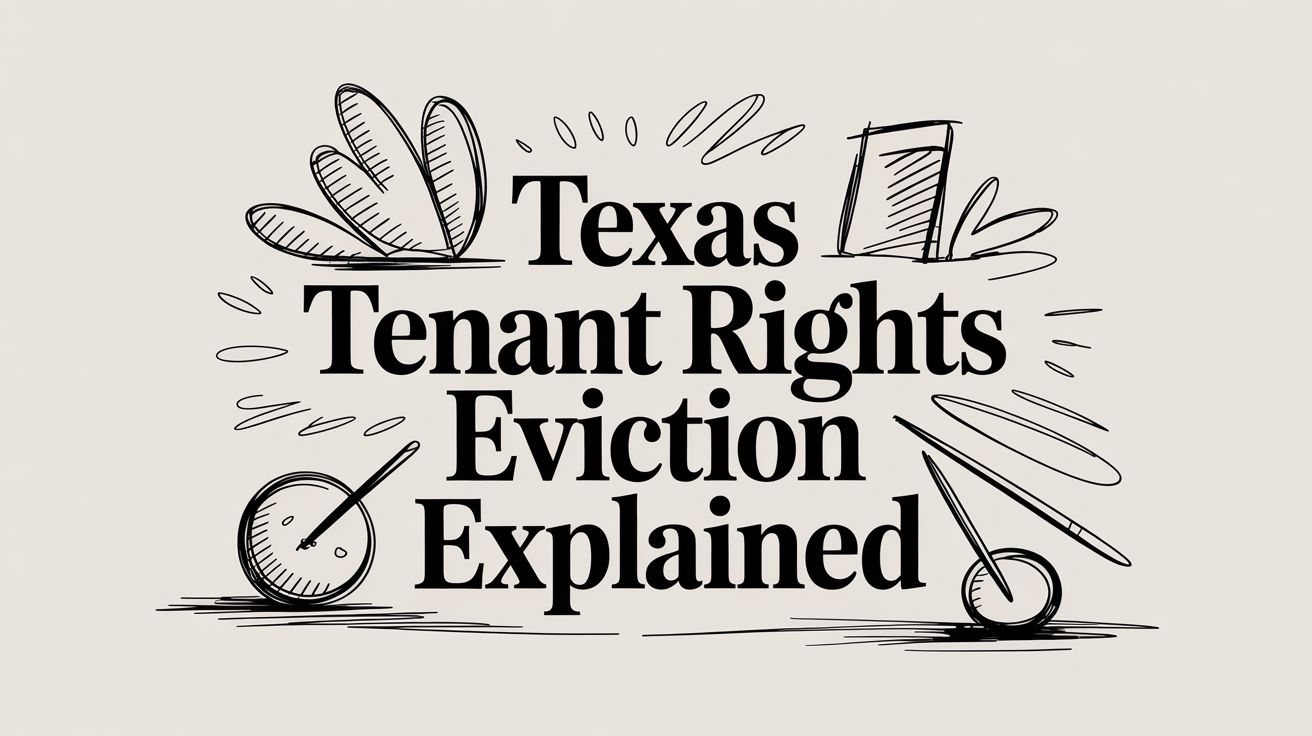
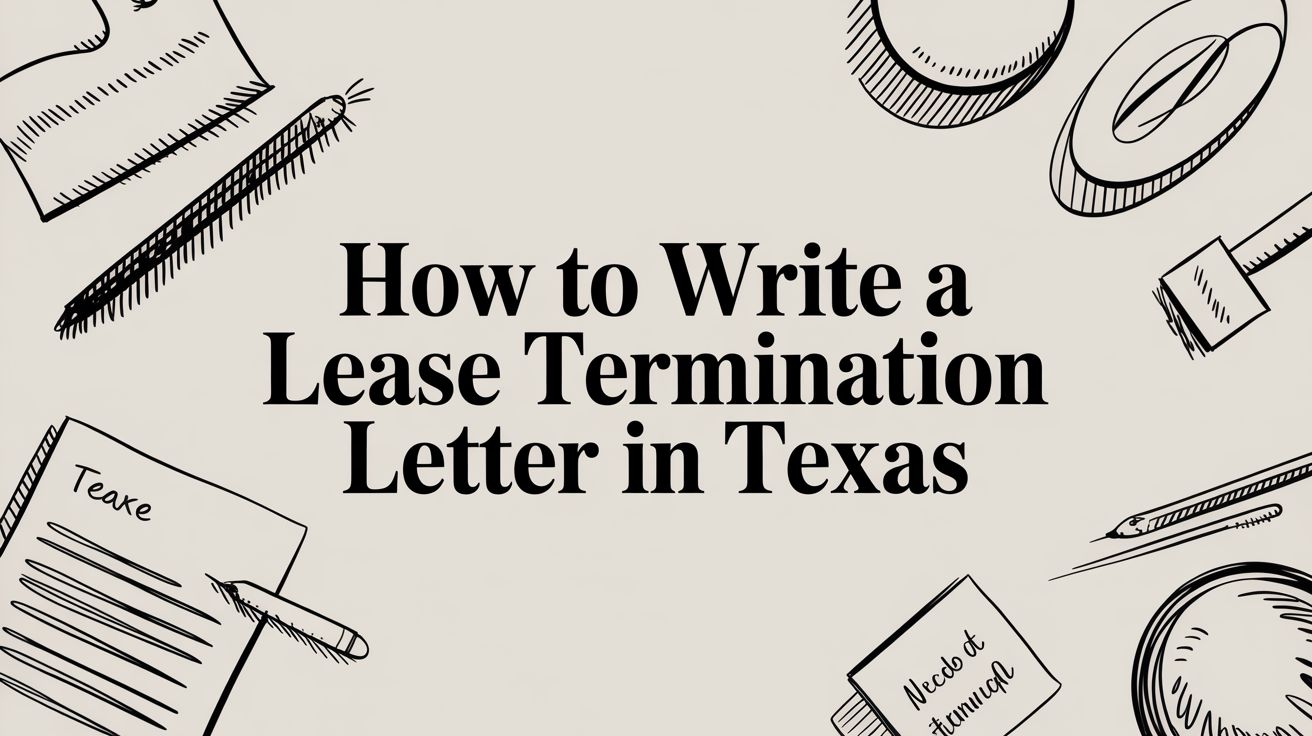

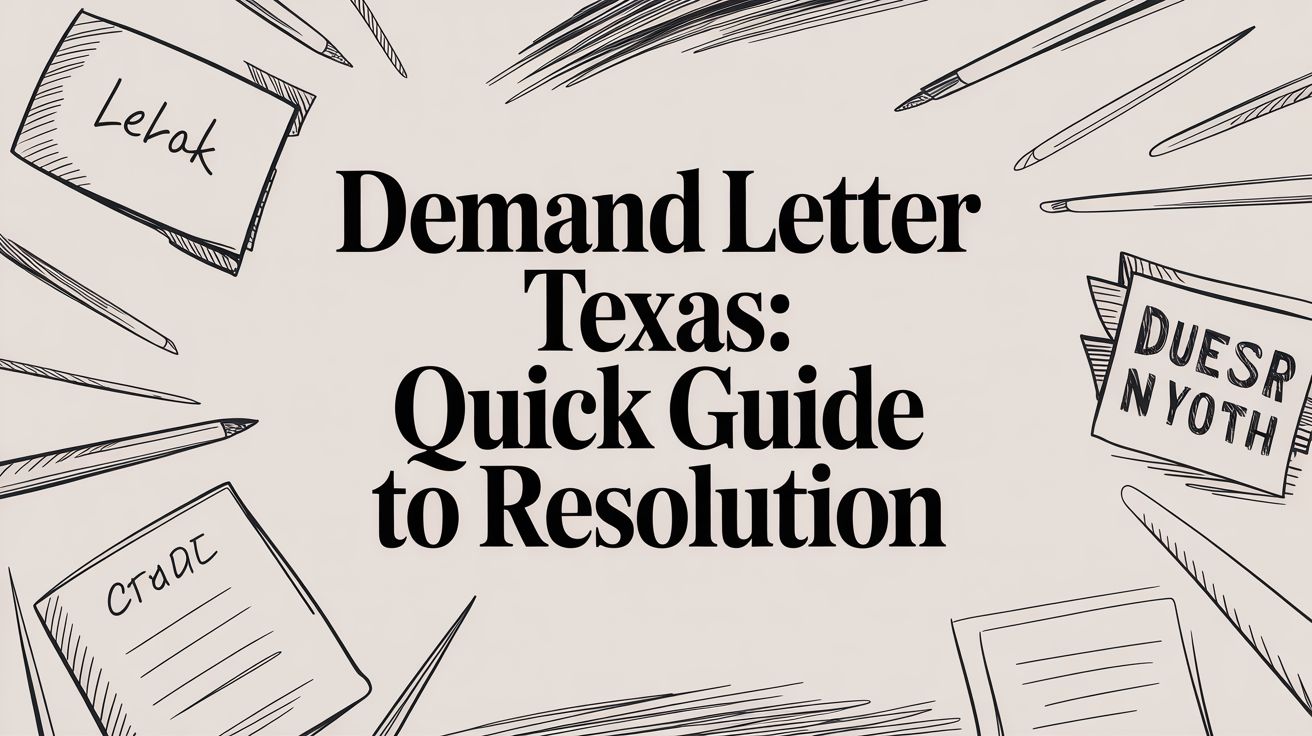
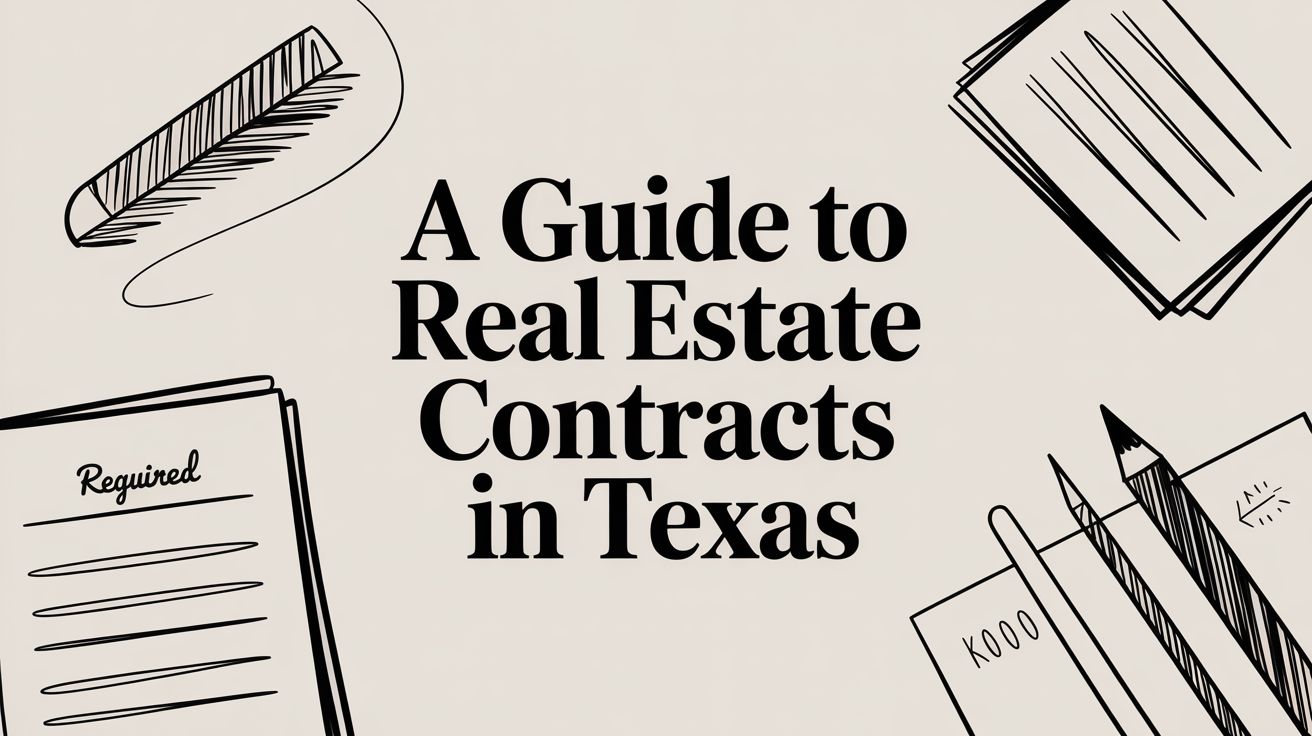
![Graphic design featuring the title "8 Valid Reasons to Break a Lease in Texas [2025 Guide]" with decorative elements like a pen and paper, emphasizing tenant rights and legal guidance in Texas.](https://texastenantlawyers.com/wp-content/uploads/2025/11/featured-image-7ebe2aec-eacb-4e61-8e85-9c298b07ad11.jpg)
